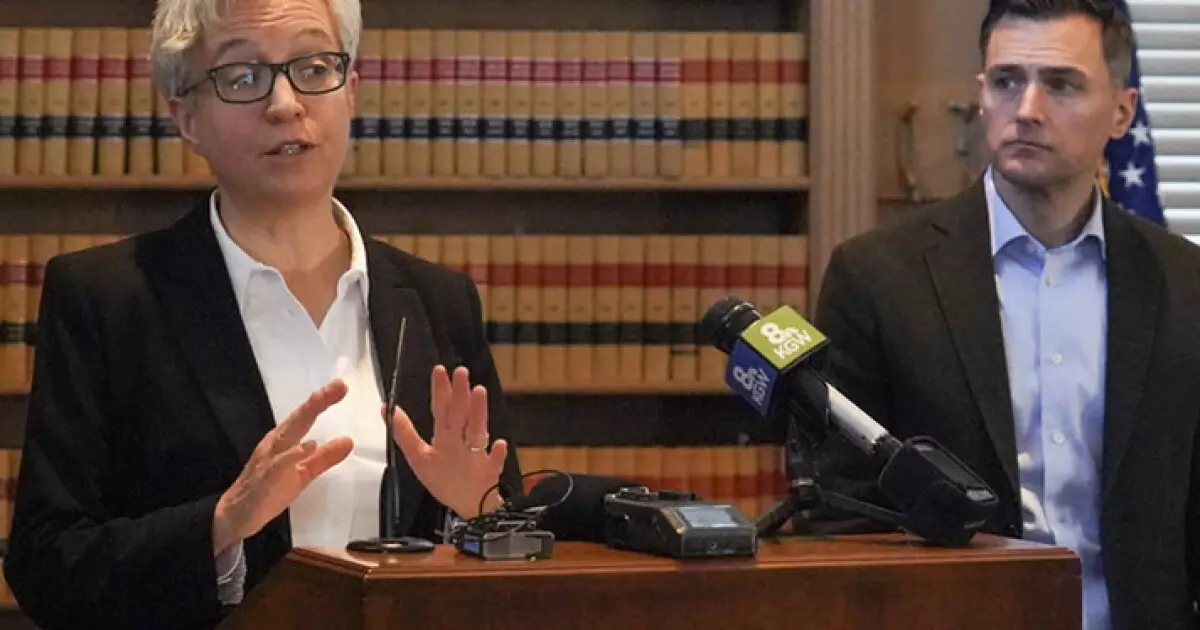Oregon’s transportation infrastructure teeters on the brink of crisis, yet much of this collapse can be traced back to political indecisiveness rather than any insurmountable external challenge. The recent mass layoffs initiated by the Oregon Department of Transportation are not merely unfortunate—they represent the culmination of a self-inflicted wound stemming from lawmakers’ failure to pass a vital funding bill. This oversight has not just delayed repairs or postponed projects; it threatens to erode the foundation of Oregon’s mobility and economic vitality. The inaction over a year-long effort to pass House Bill 2025 reveals a disturbing level of political paralysis, especially given the bill’s moderate scope—$14.6 billion over ten years to sustain and upgrade vital infrastructure.
This failure is emblematic of a broader malaise within the political class—an inability to prioritize essential services over political point-scoring or ideological rigidity. As a consequence, the governor was forced to implement immediate cuts, which will hit maintenance crews, emergency services, and supporting roles the hardest. These cuts will not merely inconvenience; they will jeopardize safety and economic stability. The message behind this chaos is clear: political optics and obstinate ideology take precedence over pragmatic governance.
Mismanagement and Short-Sighted Budget Strategies
One of the most glaring errors in Oregon’s approach has been the decision to hold hundreds of vacant positions over the past two legislative sessions as a cost-saving measure. While at a glance this might seem fiscally responsible, the truth reveals itself in the current fallout—diminished capacity to respond to emergencies, routine maintenance neglect, and a backlog of deferred projects. This strategy, focused more on superficial budget numbers, ignored the long-term repercussions of starved systems and underfunded workforce.
By choosing to prune the department’s staffing and infrastructure budget in the name of “fiscal discipline,” Oregon has compromised the resilience of its transportation network. Maintenance work—such as pothole repairs, brush clearing, and snow removal—is being scaled back, directly impacting public safety and economic efficiency. These are not optional luxuries; they are core responsibilities of a state’s transportation agency. When deferred maintenance leads to deteriorating roads or wildfire risks, it isn’t just inconvenience—it becomes a public safety issue and a financial burden in the making. Oregon’s short-term savings are doomed to be overshadowed by long-term costs—a classic case of penny-wise and pound-foolish decision-making.
Missed Opportunities and the Price of Divided Politics
The core problem isn’t just budget mismanagement; it’s the fractured political landscape that prevents vital compromises. The failure to secure a supermajority for a modest tax increase underlines a fundamental lack of leadership and willingness to confront hard truths. The 2023 legislative session exemplifies how ideological stubbornness can derail practical solutions, resulting in a sizable portion of Oregon’s critical infrastructure remaining underfunded or neglected.
This political paralysis has tangible consequences. As winter approaches, rural and mountain communities will face reduced snow and ice removal, longer road closures, and increased risks from wildfires—precisely at a time when resiliency is paramount. Not only are Oregonians paying the price in increased danger and inconvenience, but the state’s reputation as a resilient and progressive leader in infrastructure is being eroded. The mistake here is not only in the missed funding but in the failure of leadership to forge a pragmatic, centrist consensus. The ongoing crisis signals a deeper failure to recognize that governance requires compromise, especially when public safety and economic vitality are at stake.
The Road Forward: A Test of Political Will and National Responsibility
Oregon stands at a crossroads. The path chosen by its political leaders in the coming weeks will determine whether the state can recover from this avoidable crisis or be permanently damaged by long-term neglect. A pragmatic, center-right approach—focused on stabilizing funding, incentivizing necessary investments, and fostering bipartisan agreements—offers a viable way out.
The question isn’t just about current repairs or snow removal; it’s about restoring confidence in Oregon’s ability to manage its most vital asset—its infrastructure. Leaders must prioritize practical solutions over partisan posturing and acknowledge that public safety and economic stability transcend ideological boundaries. This crisis underscores that when fiscal responsibility is paired with accountability and strategic planning, a state’s infrastructure can be kept strong without over-taxation or unnecessary government expansion. But failure to seize this moment risks not only Oregon’s transportation future but also sets a troubling precedent for how the state’s political system values its citizens’ safety and prosperity.

